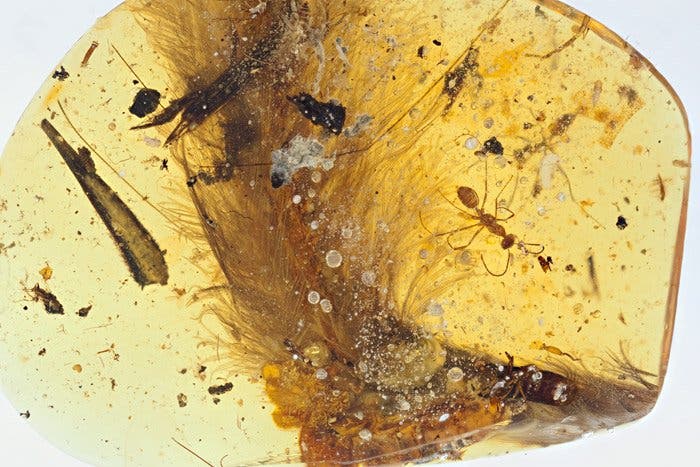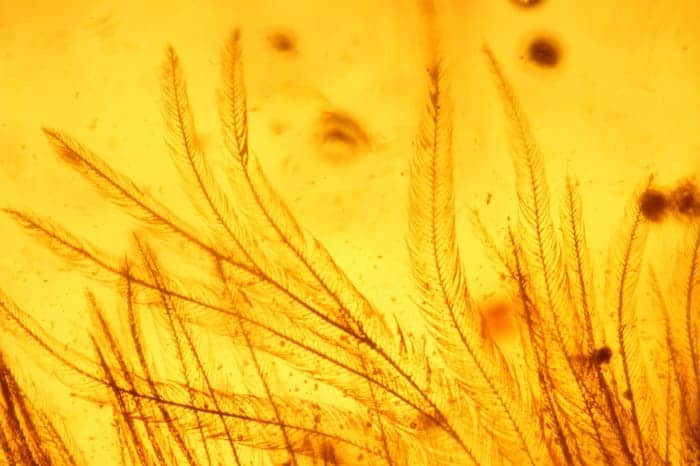
Birds are literally dinosaurs being the direct descendants of theropods. That’s not to say, however, that feathers appeared with birds. Scientists know from imprints encased in fossils that some dinosaurs sported feathers as early as 145 million years ago. These fossils are pretty rare and, moreover, only offer a two-dimensional glimpse of what dino feathers were like. Fossilized dino feathers trapped in amber, however, can teach us much more.
One such fossil was found by Lida Xing, a researcher from the China University of Geosciences in Beijing — and it was all by accident. Xing was strolling through an amber market in Myanmar when an item on sale caught his eye. The vendor told him he was looking at tree resin with some plant remains trapped inside. Xing hoped it was actually some animal part inside and bought it to bring home to study.
When he performed a CT scan in his lab, Xing was amazed to find that it was a feather, complete with the tip of a tail. The excitement was doubled when a close examination revealed it actually belonged to a dinosaur — a 99-million-year-old one to boot. It’s not clear right now which dinosaur it belonged to, but it might be a juvenile coelurosaur — a clade of theropods that more closely resemble birds than carnosaurs.
The well preserved amber specimen could prove very important for settling an age-old debate of how feathers evolved. Generally, biologists study bird embryos to get a sense of how feathers appeared millions of years ago but absent time capsules (feather fossils are very rare) we stand the risk of making too many assumptions. Specifically, one assumption is that the ‘velcro’ that keeps feathers together came before the underlying structural form. Some say the velcro appeared later, following the main stem of the feather developed to create bristly feathers.

Xing’s amber suggests even primitive feathered dinosaurs had velcro-like hooks called barbules that help feathers lie flat atop each other. The barbules seemed to hold in place loose feathers that dangled all over the place, not at all like the stiff pinions that modern birds use for flight.
“If you look at them, they’re kind of waving all over the place,” says Matthew Carrano, curator of Dinosauria at the Smithsonian’s National Museum of Natural History. “If you had a really structured feather and you had these barbules, they shouldn’t be floating all over the place. They should be pretty stiff.”
What we can glean from the fossil is that barbules came first, preceding the shaft. It’s also clear that this dinosaur didn’t fly and instead used the feathers for insulation, as reported in the journal Current Biology.
That’s not all. Inside the amber scientists also found insects: two ants belonging to an extinct group called Sphecomyrminae and some cockroach remains. The tissue around the tail bone contains ferrous iron, the remains of hemoglobin from the blood of the sparrow-sized juvenile dinosaur.
All of this information, and much more to follow, was gleaned from a single amble fossil. One that would’ve been turned into a nice necklace or pair of earrings were it not for a watchful paleontologist. Who knows what other treasures lie casually hidden in Myanmar amber fairs.
Was this helpful?



